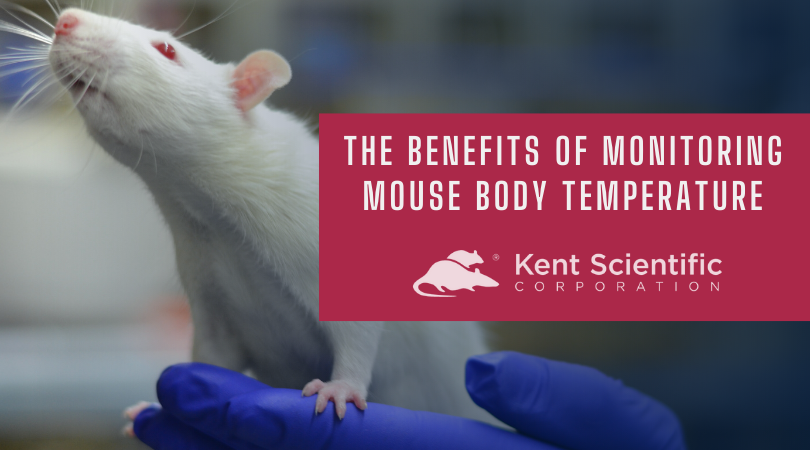The Benefits of Monitoring Mouse Body Temperature
Posted on
Researchers have been exploring the link between anesthesia and body temperature since the early 1930s. One study (1942) into the body temperature of mice during anesthesia posited a connection between reduced anesthetic efficacy and a drop in core temperature. Yet the importance of body temperature measurement prior to, during, and after general anesthesia, particularly in research settings, can often go overlooked.
Temperature monitoring in mice has changed drastically over the decades. Not only has the importance of temperature probing been continually reinforced, but the methods of how we measure the temperature of lab animals have come under increasing scrutiny.

There is a preference for noninvasive temperature readings that prioritize animal welfare. Thus, techniques like rectal probing are largely giving way to infrared thermometry. Additionally, now that optimal body temperatures are well known and dynamic temperature readings in situ are possible, there is a greater focus on intra- and post-operative temperature maintenance.
There are numerous benefits of monitoring mouse body temperature, but the bottom line is that body temperature is a critical indicator of health and wellbeing. Maintaining appropriate conditions throughout housing, surgery, and recovery is an integral part of responsible lab animal handling.
Combat Cold Stress in Housings
The 8th Edition of the NIH Guide for Care and Use of Laboratory Animals underlines the importance of body temperature within the normal circadian variation.
Briefly: thermoregulation occurs within a so-called thermoneutral zone (TNZ), which is the ambient temperature range within which an organism neither needs to increase heat production nor activate heat loss mechanisms. Exposure to critical temperatures above or below that zone can cause a wide range of behavioral and physiological changes.
Physiologic changes such as alterations in metabolism, cardiovascular parameters, respiration, and immunologic function have been observed in rats cage-housed at standard temperatures of 20–26°C. It is believed that ‘cold stress’ is the reason for these issues, and that lab mice and rats thermoregulate better at ambient temperatures several degrees higher than is typical in biomedical housings. This may factor into general animal wellbeing alongside presurgical planning.
Promote Safer Anesthesia
Tiny variations in ambient and core body temperature can be the difference between a successful surgical outcome and a failure. The NIH Guide describes the following:
“Careful monitoring and timely attention to problems increase the likelihood of successful surgical outcome. Monitoring includes routine evaluation of anesthetic depth and physiologic functions…such as body temperature. Maintenance of normal body temperature minimizes cardiovascular and respiratory disturbances caused by anesthetic agents, and is of particular importance in small animals where the high ratio of surface area to body weight may easily lead to hypothermia.”
We discussed the basics of physiological monitoring of rodents in a previous post. Essentially, temperature monitoring and maintenance during and post-surgery are vital for reducing the risk of hypothermia and complications associated with extended anesthesia periods. Learn more about this in our article on the importance of maintaining the proper body temperature of lab animals during surgery.
If you would like to learn more about temperature monitoring in mice and how to maintain optimal body temperatures in housings and during surgery, explore our range of small animal warming systems. Or contact a member of the Kent Scientific team today.
Sources and further reading:
- https://journals.physiology.org/doi/abs/10.1152/ajplegacy.1942.137.2.259?journalCode=ajplegacy
- Hankenson FC, Marx JO, Gordon CJ, David JM. Effects of Rodent Thermoregulation on Animal Models in the Research Environment. Comp Med. 2018 Dec 1;68(6):425-438. doi: 10.30802/AALAS-CM-18-000049. Epub 2018 Nov 20. PMID: 30458902; PMCID: PMC6310197.
- https://grants.nih.gov/grants/olaw/guide-for-the-care-and-use-of-laboratory-animals.pdf